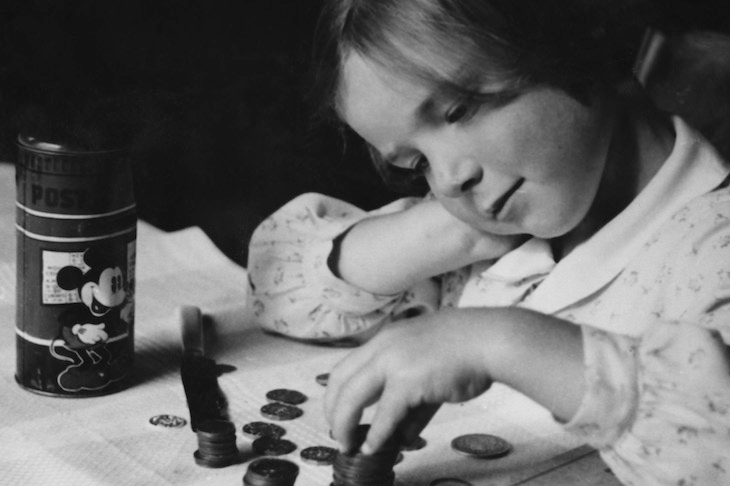Parents: stop whatever you are doing, go home and give your daughter more pocket money. She needs it. A report out this week shows that girls are getting less than their fair share from the bank of mum and dad; a whopping £2.20 a week less, to be precise. Boys are favoured when it comes to doling out allowances, with brothers routinely getting more than their sisters.
Poor girls. The gender pay gap is never out of the headlines for long and to find out it kicks in before you even leave school, never mind get a job, must come as a terrible blow. I’m expecting my daughter to milk this news for all she’s worth. As Everyday Sexism’s Laura Bates has been quick to point out, this missing £2.20 a week has consequences that go way beyond Red Bull and phone credits. Apparently, the gender pocket money gap sends out powerful indicators to children about their ‘worth’ and ‘what will be expected of them in adulthood’.
In the middle of trying to scrape together the extra cash, I thought I’d look more closely at the statistics. Or at least, I would have done – but the report, by market research company ChildWise, costs £1,800 plus VAT to access. What we do know is that the gender pocket money gap was discovered through the responses that 2,000 children aged between 5 and 16 provided to an online survey.
A problem with this kind of research is that it asks children to self-report their pocket money. Parents weren’t asked to confirm or deny the amounts in question. We simply have no way of knowing whether or not the children, laptops balanced precariously on knees, were telling the truth. It may well be the case that while boys like to big themselves up and exaggerate, girls have learnt they get more sympathy and attention by playing down their privileges. Nonetheless, the research shows a £2.20 gender pocket money gap – so we must take this as a fact.
However, hard pressed parents – fear not! It turns out that there are alternative facts. Research published last year shows it costs 46 percent more to raise a girl than to bring up a boy. Apparently, before the age of 18, daughters have roughly £30,000 more spent on them than sons. Although boys might get a little more pocket money each week, girls get more spent on clothes, activities, accessories, toiletries and shoes. Girls might lose on the chocolate bars but they are gaining in designer trainers.
But, retort the feminists, this payment-in-kind shows girls are not allowed to control their own spending. Sexist parents are denying their daughters financial independence. Perhaps. But unless we’re to conclude that reluctant girls are having unwanted clothing and toiletries thrust upon them as a punishment we can only assume they have some control over what is being bought for them. In my experience, the pester power of a 10-year-old girl let loose in Primark really does know no bounds.
The only real lesson we can learn from the pocket money story is that there is more than one side to every research report. Just as with coverage of the gender pay gap for adults, the statistics used might all be true but that doesn’t mean they haven’t been measured and cut to prove whatever point campaigners wish to make. All too often, expressing righteous outrage over sexism is considered enough to make presenting a balanced argument unnecessary. It seems that there are facts and there are alternative, feminist facts.







Comments